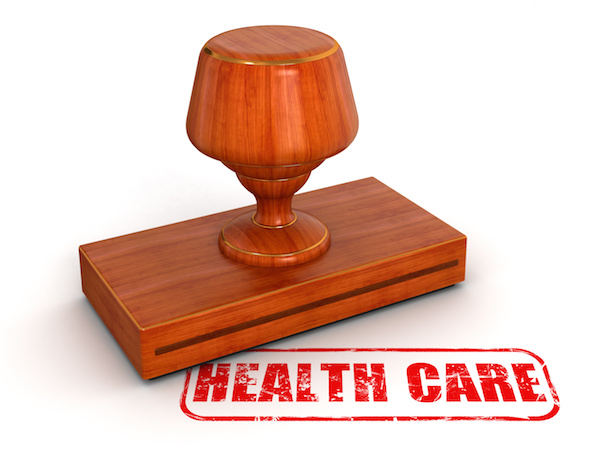TUESDAY, Nov. 2 (HealthDay News) — The U.S. Food and Drug Administration (FDA) is not doing its job of properly monitoring the safety of medical devices, the authors of a new report charge.
The FDA has the authority to approve both drugs and medical devices, but the investigators believe that the division responsible for device approval and safety is lax in both its initial approval of devices and its ongoing monitoring of related problems.
“The agency often misses problematic devices,” contends lead author Shannon Brownlee, an instructor at the Dartmouth Institute for Health Policy and Clinical Practice.
The report is published in the Nov. 3 online edition of the BMJ.
In their article, Brownlee and New York-based medical investigative journalist Jeanne Lenzer focus on the FDA’s approval and follow-up of a device that prevents or reduces seizures in patients with epilepsy who don’t respond to drug treatment.
This apparatus, called a vagus nerve stimulator (VNS) is made by Texas-based Cyberonics. The VNS, which is implanted under the skin, works by sending electrical impulses to stimulate the vagus nerve in the neck.
The FDA approved the device in 1997 and some 60,000 patients around the world are using it, according to the manufacturer. In 2005, the FDA also okayed the device as a treatment for medication-resistant depression. There are some 5,000 people who use VNS to treat depression, Cyberonics says.
Brownlee and Lenzer’s concern: That during the 13 years the device has been on the market there have been 900 FDA-reported deaths of people using the device to control their epilepsy.
The question of whether any of these deaths were due to the device remains unanswered, however, even though Cyberonics did conduct the post-marketing study the FDA requested at the time of approval. However, the FDA did not require the study to report the cause of death for individuals using the device, Brownlee and Lenzer said.
FDA spokeswoman Karen Riley said the agency is engaged in an ongoing effort to improve overall medical device safety monitoring. “We have an initiative underway to strengthen post-market monitoring,” she said.
But Brownlee believes the story of the VNS device to be just one example of the FDA’s failure to monitor the safety of medical devices before and after they are out in the marketplace. For example, she pointed out that less than one-third of devices approved under FDA’s pre-market approval process had ever been evaluated in a randomized trial.
And she said that it was physicians, not the FDA, who spotted serious problems with certain implanted defibrillators, for example. “It was physicians keeping their own database that alerted the company to the problem,” Brownlee said.
Moreover, she believes the agency is not capable of detecting potentially unsafe devices through its own harms database. Brownlee cited a finding that many post-approval studies are either not done, or conducted so poorly “as to be meaningless.”
According to the BMJ, the FDA referred Brownlee and Lenzer to five post-approval studies that they said established the device’s safety. However, Brownlee said these studies do not prove the device was not the cause of deaths, since none contained mortality data.
Brownlee also said that when the device was approved for depression it was over the objection of FDA’s own panel of scientists. And, according to Brownlee, the company has suggested that VNS may be useful for a wide range of other ailments, including obesity, stroke and traumatic brain injury, and has patented the device for these potential therapies.
According to Brownlee, the FDA will only improve when it gets more staff, better funding, more authority and more outside experts to objectively evaluate device safety.
The new findings come on the heels of a recent embarrassment for the agency: In October, the FDA apologized for mistakenly approving the Menaflex knee implant over objections from its own scientists. In its announcement, the FDA admitted it caved to political pressure from New Jersey senators and a congressman. The FDA has now taken steps to rescind that approval.
“I have sympathy for the FDA, which is understaffed and underfunded in many areas,” Brownlee said. “But there is no question that this agency had been captured by the very industries that it is supposed to regulate,” she said.
Defending the VNS, Cyberonics chief financial officer Greg Browne said that “none of the approximately 900 deaths reported to the FDA were attributed to VNS therapy.”
“Available data demonstrate that all-cause mortality rates for VNS therapy patients are less than half the rates in the comparable non-VNS epilepsy patient population,” he added.
Dr. Jerry Avorn, professor of medicine at Harvard Medical School and author of an accompanying journal editorial, agreed with the article’s authors that, “until recently the part of FDA that approves devices has been run in a much more loose manner than the part of FDA that approves drugs.”
While the FDA has started to deal with some of these problems, “it’s still more of a wild west environment than the drug side of FDA,” he added.
The agency needs to look harder at the standards it uses when approving new devices, and should revamp its surveillance systems to spot people who have received faulty devices, he added.
“All government regulation is not a bad thing,” Avorn said. “It can sometime be life-saving,” he said.
More information
For more information on the FDA and medical devices, visit the U.S. Food and Drug Administration.

